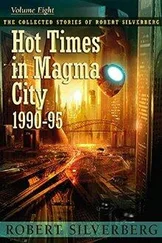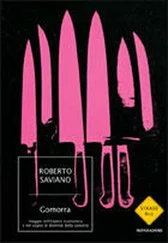Roberto Saviano - Gomorrah - A Personal Journey into the Violent International Empire of Naples’ Organized Crime System
Здесь есть возможность читать онлайн «Roberto Saviano - Gomorrah - A Personal Journey into the Violent International Empire of Naples’ Organized Crime System» весь текст электронной книги совершенно бесплатно (целиком полную версию без сокращений). В некоторых случаях можно слушать аудио, скачать через торрент в формате fb2 и присутствует краткое содержание. Жанр: Старинная литература, на английском языке. Описание произведения, (предисловие) а так же отзывы посетителей доступны на портале библиотеки ЛибКат.
- Название:Gomorrah: A Personal Journey into the Violent International Empire of Naples’ Organized Crime System
- Автор:
- Жанр:
- Год:неизвестен
- ISBN:нет данных
- Рейтинг книги:5 / 5. Голосов: 1
-
Избранное:Добавить в избранное
- Отзывы:
-
Ваша оценка:
- 100
- 1
- 2
- 3
- 4
- 5
Gomorrah: A Personal Journey into the Violent International Empire of Naples’ Organized Crime System: краткое содержание, описание и аннотация
Предлагаем к чтению аннотацию, описание, краткое содержание или предисловие (зависит от того, что написал сам автор книги «Gomorrah: A Personal Journey into the Violent International Empire of Naples’ Organized Crime System»). Если вы не нашли необходимую информацию о книге — напишите в комментариях, мы постараемся отыскать её.
Gomorrah: A Personal Journey into the Violent International Empire of Naples’ Organized Crime System — читать онлайн бесплатно полную книгу (весь текст) целиком
Ниже представлен текст книги, разбитый по страницам. Система сохранения места последней прочитанной страницы, позволяет с удобством читать онлайн бесплатно книгу «Gomorrah: A Personal Journey into the Violent International Empire of Naples’ Organized Crime System», без необходимости каждый раз заново искать на чём Вы остановились. Поставьте закладку, и сможете в любой момент перейти на страницу, на которой закончили чтение.
Интервал:
Закладка:
Mikhail Timofeevich Kalashnikov lived with his wife in a rented apartment in Izhevsk, formerly Ustinov, a city at the foot of the Ural Mountains, which didn’t even appear on the map until 1991. One of the many locations the USSR had kept secret. Kalashnikov was the town’s big draw. He had become a sort of tourist attraction for elite visitors, so they set up a direct connection from Moscow just for him. A hotel near his house, which is where Mariano had stayed, was making a mint putting up the general’s admirers, who would wait there for him to return from some Russian tour or simply for him to receive them. Mariano had his video camera in hand when he entered Kalashnikov’s house, and the general had allowed him to use it as long as he didn’t make the film public. Obviously Mariano agreed, knowing full well that the person who had arranged the meeting knew his address, phone number, and face. Mariano gave Kalashnikov a Styrofoam cube sealed with tape with buffalo heads on it. He had brought a box full of mozzarella di bufala all the way from the Aversa Marshes in the trunk of his car.
Mariano showed me the video of his visit to Kalashnikov’s home on the little screen that folded out from the side of his camera. The images jumped around, and the zoom action deformed eyes and objects, the lens rattled by thumbs and wrists. It was like a video from a school trip, filmed while running and jumping. Kalashnikov’s house resembled Arzano secessionist boss Gennaro Marino McKay’s dacha, or maybe it was simply a classic version, but the only other dacha I had ever seen was his, so it looked like a replica to me. The walls were plastered with Vermeer reproductions, the furniture was laden with crystal and wooden knickknacks, and every inch of the floor was covered with carpets. At a certain point the general placed his hand over the lens. Mariano told me that, traipsing around with his camera and a huge dose of bad manners, he had gone into a room that Kalashnikov didn’t want filmed under any circumstances. In a small metal cabinet on the wall, clearly visible through the armored glass, was the first AK-47, the prototype built from the designs that, according to legend, the old general—then an unknown, low-ranking officer—had made on scraps of paper while in the hospital recovering from a bullet wound and eager to create a weapon that would make the Red Army’s frozen and starving soldiers invincible. The first ever AK-47, hidden away like the first dime earned by Uncle Scrooge McDuck, the famous Number One he keeps in an armored shrine, far from the clutches of Magica De Spell. It was priceless, that model. A lot of people would have given anything for a military relic like that. As soon as Kalashnikov dies, it will end up on the auction block at Christie’s, like Titian’s canvases or Michelangelo’s drawings.
Mariano spent the entire morning at Kalashnikov’s house. The Russian who introduced him must have been quite influential for the general to treat him so warmly. The video camera was running as they sat at the table and a tiny, elderly lady opened the Styrofoam box of mozzarella. They ate with relish. Vodka and mozzarella. Mariano wanted to record it all, so he set the camera at the head of the table. He wanted proof that General Kalashnikov ate the mozzarella from his boss’s dairy. In the background the lens also captured a piece of furniture covered with framed photos of children. Even though I wanted the video to end as soon as possible as I was already feeling seasick, I couldn’t contain my curiosity:
“Mariano, Kalashnikov has that many children and grandchildren?”
“They’re not his children! They’re all photos people send him of children named after him, people whose lives were saved by a Kalashnikov or who simply admire him.”
Like doctors who put pictures of children they have treated on their office shelves as mementos of their professional success, General Kalashnikov had photographs of children named after his creature in his living room. A well-known guerrilla fighter with the Popular Liberation Movement in Angola once told an Italian reporter, “I named my son Kalash because it is synonymous with liberty.”
Born in 1919, Kalashnikov is now a well-preserved, sprightly old man. He’s invited all over the place, a sort of movable icon that substitutes for the most famous assault rifle in the world. Before retiring from the armed services, he received a general’s stipend of 500 rubles, at the time more or less $500 a month. If Kalashnikov had been able to patent his weapon in the West, he would undoubtedly be one of the richest men in the world. Approximately—for lack of concrete figures—more than 150 million Kalashnikovs of varying models have been produced, all based on the general’s original design. Even if he had only earned one dollar for each weapon, he would be swimming in money now. But this tragic loss of wealth did not bother him in the least. He had given birth to the creature, had breathed life into it, and that was gratification enough. Or maybe he made a profit after all. Mariano told me about presents arriving every now and then from admirers: financial tributes, thousands of dollars deposited in his bank account, precious gifts from Africa—there was talk of a gold tribal mask from Mobutu and a canopy inlaid with ivory that Bokassa had sent him. And it is said that a train, complete with locomotive and cars, arrived from China, a gift from Deng Xiaoping, who knew of the general’s difficulty in boarding airplanes. But these are merely legends, rumors that circulate among journalists who, unable to interview the general—he receives no one without an important introduction—talk instead to the employees in the arms factory in Izhevsk.
Mikhail Kalashnikov’s responses were automatic, always the same answers no matter what the question was. His English, which he’d learned as an adult, was smooth, and he used it as he would a screwdriver. To calm his jitters, Mariano posed generic and pointless questions about the AK-47. “I did not invent that weapon to make money, but only and exclusively to defend the Motherland in a moment in which she needed it. If I had to go back and do it all over again, I would do exactly the same things and live my life just as I have. I have worked all my life, and my life is my work.” This is how he answers every question about his invention.
Nothing in the world—organic or synthetic, metal or chemical—has produced more deaths than the AK-47. It has killed more than the atom bombs dropped on Hiroshima and Nagasaki, more than HIV, more than the bubonic plague, more than malaria, more than all the attacks by Islamic fundamentalists, more than the total of all the earthquakes that have shaken the globe. An exponential amount of human flesh, impossible to even imagine. Only one image came anywhere close to a convincing description, an advertisement at a convention: fill a bottle with sugar by pouring the grains from a small hole in the corner of the bag. Each grain of sugar is someone killed by a Kalashnikov.
The AK-47 can fire in the most disparate conditions. It won’t jam, will shoot even when crammed with dirt or soaking wet, is comfortable to hold, and has a feather trigger that even a child can pull. Luck, error, imprecision—all the elements that might spare a life in battle—are eliminated by the certainty of the AK-47. Fate has been prohibited from playing a role. Easy to use and easy to transport, it allows you to kill efficiently, without any type of training. “It can turn even a monkey into a combatant,” as Laurent Kabila, the fearsome Congolese political leader, used to say. AK-47s have been used by armies in conflicts in more than fifty countries over the last thirty years. Massacres perpetrated with AK-47s—verified by the UN— have taken place in Algeria, Angola, Bosnia, Burundi, Cambodia, Chechnya, Colombia, Congo, Haiti, Kashmir, Mozambique, Rwanda, Sierra Leone, Somalia, Sri Lanka, Sudan, and Uganda. More than fifty regular armies are supplied with AK-47s, and statistics on the irregular, paramilitary, and guerrilla groups that also use them are impossible to formulate.
Читать дальшеИнтервал:
Закладка:
Похожие книги на «Gomorrah: A Personal Journey into the Violent International Empire of Naples’ Organized Crime System»
Представляем Вашему вниманию похожие книги на «Gomorrah: A Personal Journey into the Violent International Empire of Naples’ Organized Crime System» списком для выбора. Мы отобрали схожую по названию и смыслу литературу в надежде предоставить читателям больше вариантов отыскать новые, интересные, ещё непрочитанные произведения.
Обсуждение, отзывы о книге «Gomorrah: A Personal Journey into the Violent International Empire of Naples’ Organized Crime System» и просто собственные мнения читателей. Оставьте ваши комментарии, напишите, что Вы думаете о произведении, его смысле или главных героях. Укажите что конкретно понравилось, а что нет, и почему Вы так считаете.












